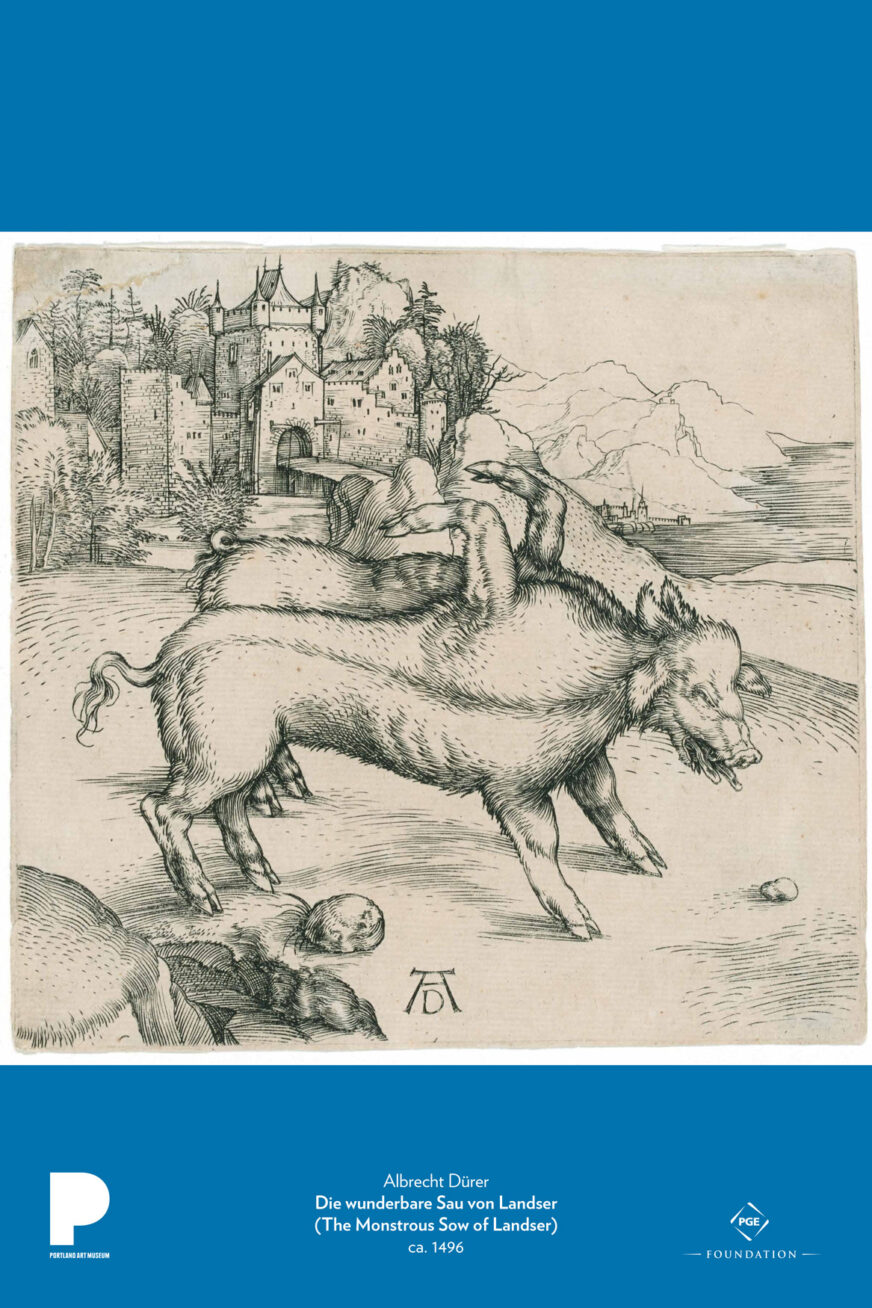
German artist Albrecht Dürer is considered one of the foremost artists of the Renaissance period. A brilliant painter, draftsman, and writer, Dürer is most recognized for his impact on the medium of printmaking. His woodcuts and engravings demonstrate unprecedented technical skill through tonal variation (his use of bright whites, shades of gray, and the deepest blacks) and compositional intricacy (the arrangement of subjects in the foreground, middle, and background). Dürer’s innovations brought the practice of printmaking into the realm of fine art.
Dürer first learned the process of engraving while working as a goldsmith in his father’s workshop. Since the Middle Ages, goldsmiths had used engraving to decorate and inscribe metalwork. In the fifteenth century, engravers adapted this practice to produce artistic images on copper printing plates. In the process of engraving, the artist uses a wedge-shaped metal tool, called a burin, to gouge furrows in a copper plate. The artist applies ink to the plate, then wipes the surface. The ink remains only in the engraved lines. The artist places the inked copper plate into a press with a moistened sheet of paper. The paper picks up the ink from the lines created in the design, printing the image in reverse. Dürer created prints with a density of fine lines that simultaneously provide form, texture, and shading.
The Monstrous Sow of Landser is one of Dürer’s earliest engravings, made when he was twenty-five years old. Dürer was inspired by reports of an extraordinary female pig born on March 1, 1496, in the hamlet of Landser in the Austrian province of Sundgau (Alsace). Witnesses described a sow with “one head, four ears, two bodies, eight feet on six of which it stood, and two tongues.” While Dürer, living in Nuremberg, did not see the animal, the poet and humanist Sebastian Brant, who lived in Basel, did, and he immediately penned verses for a broadsheet accompanied by a crude woodcut. It was from the broadsheet that Dürer borrowed the view of the village in the background.
In the 1490s, as the millennium approached, such freakish births were perceived as portents of the end of the world. Rather than focus on the apocalyptic implications of the event, Dürer portrayed the strange creature with the objectivity of a naturalist. The Monstrous Sow of Landser is not an accurate representation of the pig’s true appearance. However, the print’s linear perspective and detailed depiction of the animal’s anatomy and the Austrian landscape create the impression of empirical observation.
Discussion and activities
- Look closely at the image. Make a list of five details you notice about Dürer’s representation of the sow. Then, make a list of five details you notice about the landscape and surrounding environment in which the sow appears. What do you find intriguing or surprising about the details you’ve observed? Share your lists with a partner and discuss.
- The Museum’s catalogue translates Dürer’s German title–Die wunderbare Sau von Landser–into English as The Monstrous Sow of Landser. The word wunderbare could also be translated as “wonderful,” “marvelous,” or “miraculous.” How does the translation affect your interpretation of the image? Which translation do you find most apt?
- How is Dürer’s creature different from or similar to unusual animals represented by artists from other cultures and time periods? See, for example, the Chinese figure Bixie (Chimera) (2nd century BCE/1st century BCE) and contemporary Native American artist Rick Bartow’s Ursa Major (2005) from the Portland Art Museum’s collection. Artists often invest animals with spiritual or mythological significance. What do you see in Dürer’s engraving that supports or resists a supernatural interpretation of the Landser sow?
- Draw your own monstrous and marvelous animal. What do you add, alter, or take away to make your creature unusual? Do you decide to introduce body parts from other animals or plants?
- Write a story about sow of Landser. What do you think she experienced during her short life? How do you imagine people or other animals interacted with her?
Recommended resources
- From Paper to Copper: The Engraver’s Process
Andrew Stein Raftery, Associate Professor of Printmaking, Rhode Island School of Design - Albrecht Dürer (1471–1528), Heilbrunn Timeline of Art History, Metropolitan Museum of Art.
Spanish-language PDFs developed with the support and collaboration of
